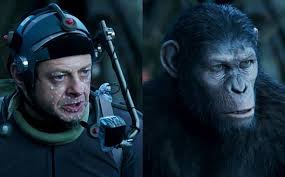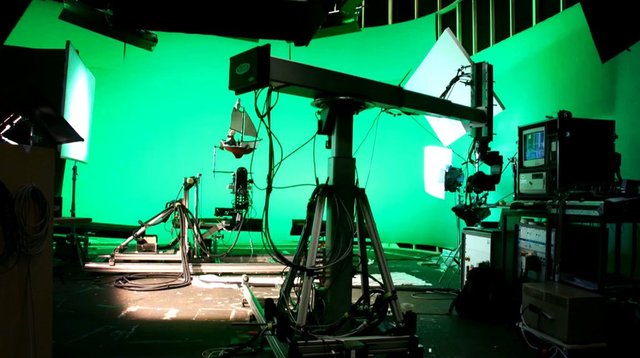CGI technology was first introduced in 1973 in the Westworld film. This film by Michael Crichton is the first film to use computer digital images as part of the film. Narrated, in the world of Westworld, where all the characters are robots (which coincidentally resemble the story of Surrogates).
One of the characters, the robot Gunslinger (played by Yul Brynner), suffered damage and tried to kill Westworld visitors. Computers are used to describe the point of view of Gunslinger in 2D. For each scene 10 seconds from the Ginslinger's point of view it takes 8 hours of process.
Although the CGI technology used at that time was 2D technology, it was a new breakthrough in the world of film using CGI. In 1976, the film Futureworld, which was a sequel to the Westworld film, began the use of 3D CGI to animate hands and faces. Star Wars best-selling film, in 1977 also used 3D CGI technology for the DeathStar scene, and in 1978, for the first time made a film that uses CGI technology as a whole, namely The Works (the film was never finished).
Then, 3D CGI technology managed to amaze the public through Stephen Spielberg's Jurrasic Park film in 1993. For the sophistication of the use of 3D CGI in dinosaur visualization, the film became a box office and won 3 Oscars, one of which was for the Visual Effect category.
The following year, CGI was used to make special effects on the film Forrest Gump, namely when the character Gary Sinise portrayed the character of Lieutenant Dan Taylor who lost his legs while fighting. The original foot of Gary Sinise was removed so that Lieutenant Dan Taylor's character really did not appear to be legged. The film also won 6 Oscars, one of which was the Visual Effect category.
With the development of computer and software technology, in the following years 3D CGI technology was used more fantastically. The box office films recorded using this CGI technology are Terminator, Harry Potter, The Lord of the Rings, Spiderman, King Kong, The Dark Night, Iron Man, Transformers, and The Curious Case of Benjamin Button.
CGI is used for computer visual effects because the effects produced are more than other controlled based on physical processes, such as building miniatures for picture effects or hiring extras for crowd scenes, and therefore allowing the creation of images that are not feasible to use other technologies. This can also allow one artist to produce content without the use of actors, expensive assignments, or props.
Computer software such as 3D Max, and open source Blender, LightWave 3D, Maya and Softimage AutoDesk are used to create computer-generated images for movies, etc. Recent CGI software availability and computer speed enhancements have allowed individual artists and small companies to produce professional grade films, games, and fine arts from home computers. This has brought about the Internet subculture of the child itself with a global set of celebrities, clichés, technical and vocabulary. Simulators, especially flight simulators, and general simulations, make extensive use of CGI techniques to represent Outside the World.
As early as 2000, computer-generated images became the dominant form of special effects. Technology progressed to the point which made it possible to include virtual double-dwarfs. Camera tracking software has been refined so that the more complex visual effects of previous developments are impossible. Additional computer generated has been used extensively in crowds with advanced sights and crowds of flocking simulation software. The CGI timeline in a detailed film shows a pioneering list using computer-generated images in film and television.
Films make heavy use of computer graphics produced; called computer-generated imagery (CGI) in industrial films. In the 1990s, and early 2000 CGI was quite sophisticated so for the first time it was possible to create realistic 3D computer animations. The Phantom film Threatens has been heavily noted for the use of computer graphics.
Computer software such as LightWave 3D Maya and Softimage XSI are used to create computer-generated images for movies, etc. Recent CGI accessibility from software and computer speed enhancements has enabled individual artists and small companies to produce professional grade films, games, and fine arts from home computer. This has brought about the Internet subculture of the child itself with a global set of celebrities, technical and vocabulary.
Computer-generated imagery (CGI) is the application of the field of computer graphics (or more specifically 3D computer graphics) to special effects. CGI is used in films, television programs and commercials, and in print media. Real-time computer graphics, like those in video games, are rarely referred to as CGI.
CGI is used because it is usually cheaper than physical methods, such as building elaborate miniatures to employ or add many image effects to crowd scenes, and therefore allows the creation of images that are not feasible to use other methods. This can also allow one artist to produce content without the use of other actors or contributors to the project.
CGI is different from animation or cartoon films in general. The process of making a cartoon film usually starts with drawing characters or characters in the film manually. While CGI makes character characters by using certain software on the computer. Cartoon cartoons are currently also many who have applied CGI technology because it is considered to be a faster manufacturing process even though it requires quite expensive costs.

Authors get paid when people like you upvote their post.
If you enjoyed what you read here, create your account today and start earning FREE STEEM!
If you enjoyed what you read here, create your account today and start earning FREE STEEM!